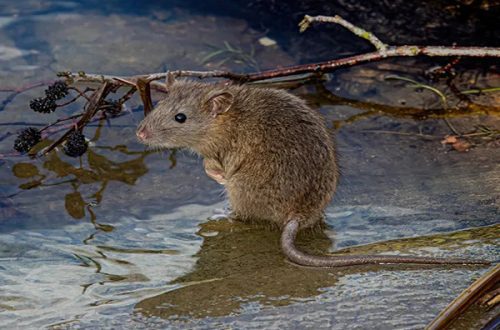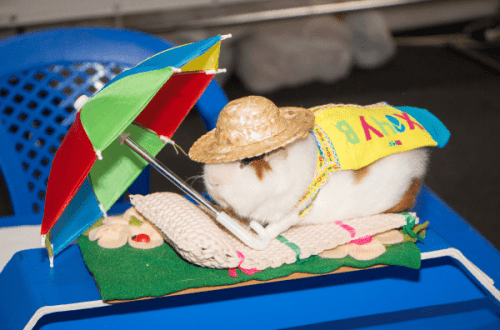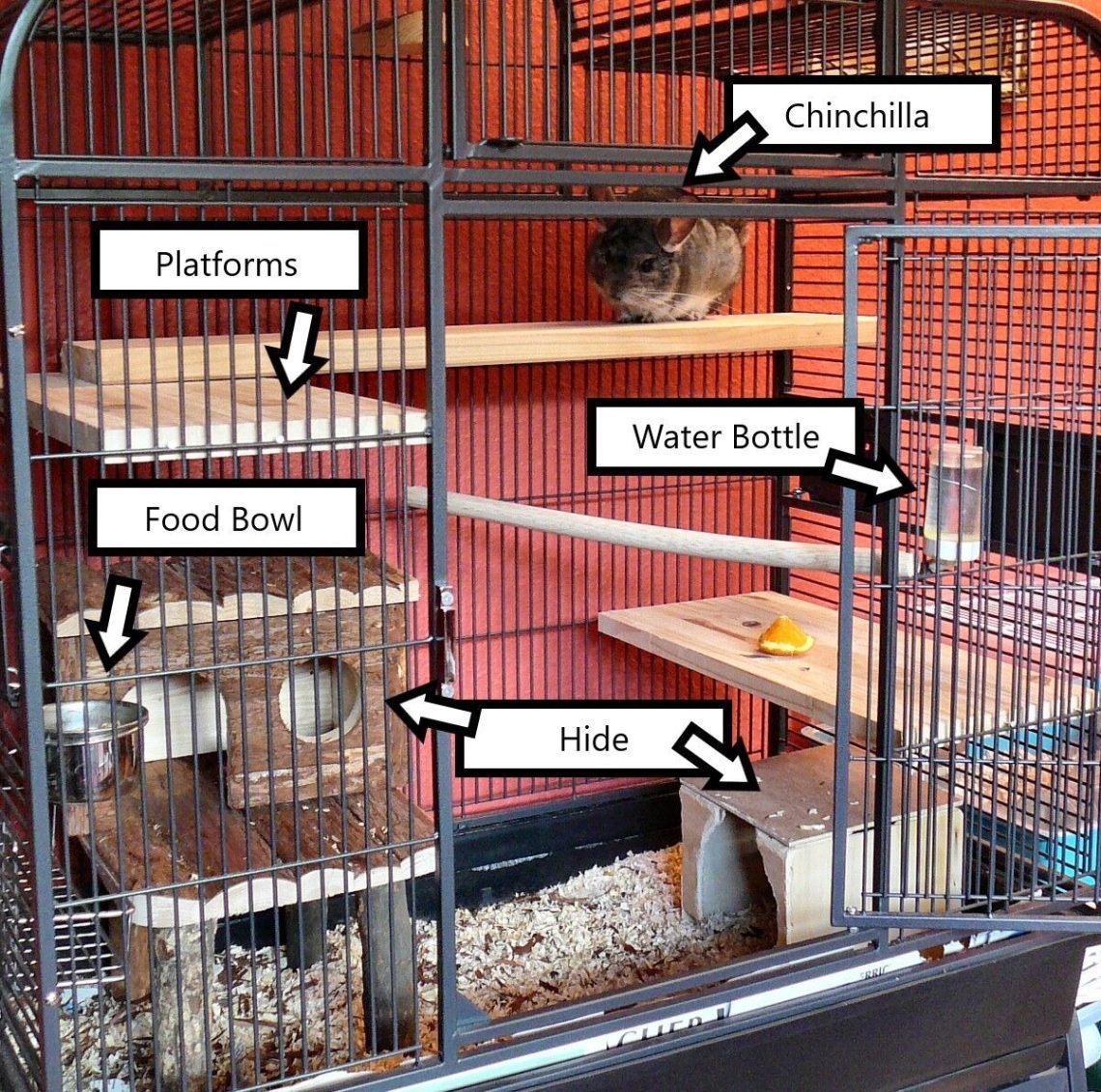
How to equip a chinchilla cage: filler and housing equipment (photo)
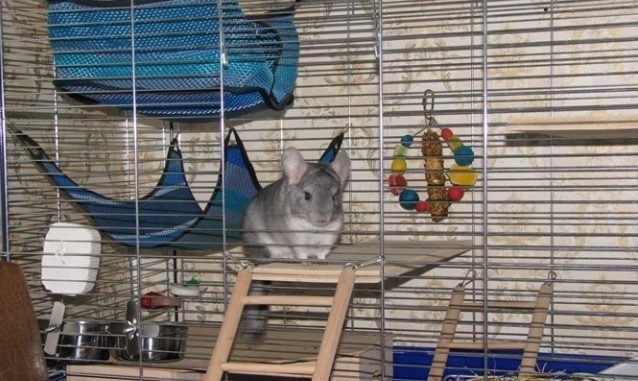
Competently and correctly equipping a cage for a chinchilla is one of the most important tasks for the owner of a fluffy pet. The animal spends most of its time in its own home and it is necessary to create cozy and comfortable conditions for it.
Contents
Arrangement of a cage for chinchillas
The counters of pet stores are full of all kinds of goods and accessories for rodents. And of course, many inexperienced owners make a common mistake, acquiring for a small pet, both necessary items and those that you can do without.
The design of the cage of the animal should be carried out taking into account the size of the dwelling of the rodent. After all, active and mobile chinchillas need ample space for free movement. Therefore, it is highly undesirable to clutter up the interior of a small cage with ladders, hammocks, tunnels and toys. Equipping the pet’s home, you should divide it into several sections:
- a place for feeding, in which a drinking bowl, a feeder and a sennitsa will be located;
- a recreation area where a house is installed;
- a section for a toilet in which a tray with a filler is placed;
- a corner for games and entertainment, where you can put a running wheel, a tunnel and toys (if the size of the cage allows).
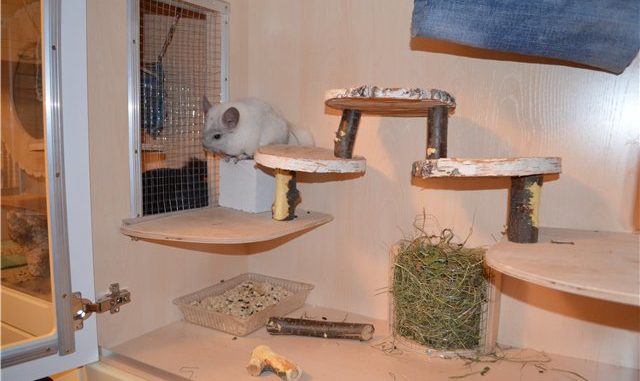
Important: the area with a drinking bowl and a feeder should be located far from those parts of the cage that are allocated for entertainment or a toilet. Otherwise, animal waste and feces can get into the feed, which often leads to food poisoning in animals.
Shelves and stairs equipment
Fluffy rodents move by jumping, pushing off the surface with their hind legs. Therefore, it is necessary to equip the chinchilla cage with shelves, which serve as a kind of exercise equipment for pets.
The best option would be to install three or four shelves at different levels, so that the animal can change its position at its own discretion, jumping from one shelf to another. Shelves are placed at a safe height not exceeding eighty centimeters.
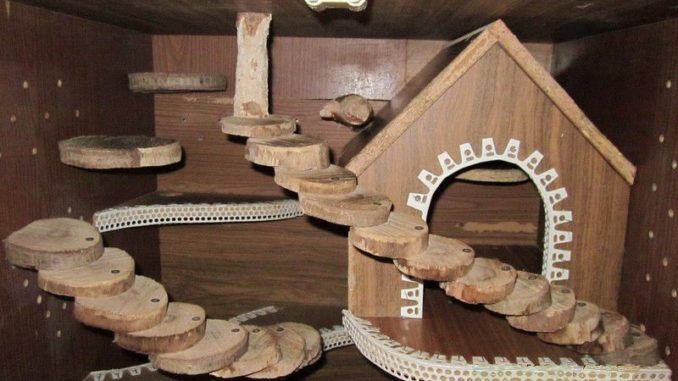
If there are not enough shelves in the purchased cage, the owner can easily make them at home. For this purpose, wooden boards are used, sawing out a shelf of the desired size and securely attaching it to the bars of the cage.
A ladder for a chinchilla leaning against the shelves or walls of the cage will be a real gift. The rodent will enthusiastically climb it or use it as a sharpener for teeth. Ladder for chinchillas can be both vertical and horizontal, in the form of a suspension bridge.
Ladders can also be made independently from wooden twigs fastened together with a rope or thick thread.
Important: the chinchilla will not resist the temptation to gnaw on a wooden shelf or ladder. Therefore, for the manufacture of these accessories, you can not choose coniferous trees, cherries or oaks. The wood of these species contains resins and tannins, which, once ingested by the animal, will lead to digestive problems.
Cage Equipment: Essentials
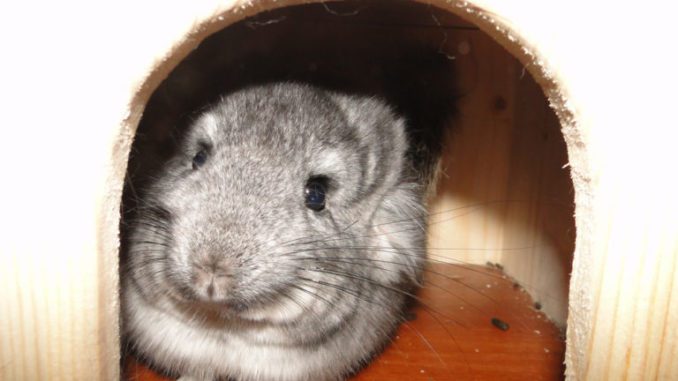
To provide the animal with comfortable conditions, the owner should take care of the necessary accessories and items that must be present in the rodent’s cage.
What should be in a chinchilla’s cage
The list of required accessories is small and relatively cheap. Moreover, most of them can be made with your own hands from improvised materials.
Feeding trough
One of the main attributes of the cage is the feeder. The place for the feeder is chosen so that the animal has free access to it. It is best to install the feeder near one of the shelves, securely attaching it to the bars of the cage.
Drinker
Small rodents drink little, but they should always have fresh clean water. The drinker is placed next to the feeder.
Canopy
In addition to the main food, the diet of chinchillas should be supplemented with high-quality hay, which improves the digestion of a fluffy rodent. But just putting a bundle of hay on the bottom of the dwelling is not recommended, as the animal will scatter it throughout its dwelling. Therefore, an important accessory for equipping the cage is a special sennitsa, which is also installed in the feeding area.
House
These animals need a secluded place, so there must be a house in the chinchilla’s cage. Given the fact that fluffy pets are nocturnal, it is advisable to install the house in the least illuminated area of uXNUMXbuXNUMXbthe cage.
bathing suit
To take sand baths, with which the animals clean their luxurious fur coat, you need to put a special bathing suit in the cage. But although the bath is a necessary accessory for these animals, it is placed in the cage only for a short time and removed after the animal has bathed. Therefore, there is no need to allocate a separate place for a bathing suit.
mineral stone
Fluffy rodents have teeth that grow throughout their lives and animals need to grind them down. For this purpose, a mineral or salt stone is hung in a cage.
Restroom
Clean and tidy chinchillas are quite easy to train to cope with their natural needs in the tray. In the role of a toilet for a small pet, both a special tray and a small baking dish can act. Usually the chinchilla chooses a place for the toilet herself, and in order for her to use the tray for its intended purpose, it is advisable to put it in a corner chosen by the pet.
Secondary attributes for a pet
Chinchillas love to play and frolic. And, if the pet has a large and spacious cage, you can please him with an entertainment area in which the animal will play with pleasure.
Additional accessories:
- running wheel. Some chinchillas enthusiastically run in the wheel. The main rule is that for safety reasons it must be in a very fine mesh so that the animal’s paw does not get stuck in it during movement;
- hanging hammock. The pet will use the hammock stretched between the shelves as a swing or a place to rest;
- tunnel. Fluffy animals love to hide in secluded places, and it would be useful to put tunnels for chinchillas in the cage;
- Toys. So that the chinchilla does not get bored, you can hang cages from the ceiling, wooden rings or bells strung on a rope.
Cell filler options
Do I need bedding for chinchillas and what is better to use as filler for the cage tray?
It is believed that chinchillas, unlike other domestic rodents, practically do not smell, but this is not entirely true. Their feces do not have a pungent and unpleasant odor, but if the pet defecates directly on the plastic tray, then it will have to be cleaned and washed every day.
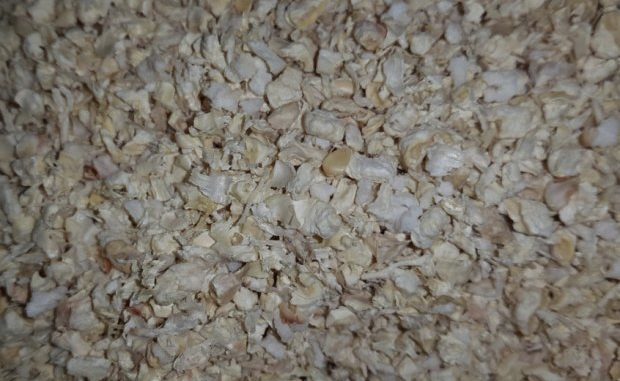
Therefore, the filler for chinchillas, although optional, is an important attribute that helps to keep the animal’s home clean.
Filler types:
- wood filler in the form of pellets, made from pressed sawdust;
- dry straw;
- sawdust;
- corn flooring;
- regular toilet paper.
It is best to choose wood or corn filler, which perfectly retain unpleasant odors. But their cost is quite high, so many owners use paper or straw as flooring.
Important: you can not pour coniferous filler into the chinchilla’s cage. The animal will definitely taste it, and the resin of coniferous trees is dangerous for the health of these animals.
In his own home, a chinchilla should feel comfortable and comfortable, so it is better to equip his cage with practical and necessary items, rather than beautiful, but completely useless accessories.
Video: how to properly equip a cage for a chinchilla
Setting up a chinchilla cage
3.3 (65.71%) 35 votes




